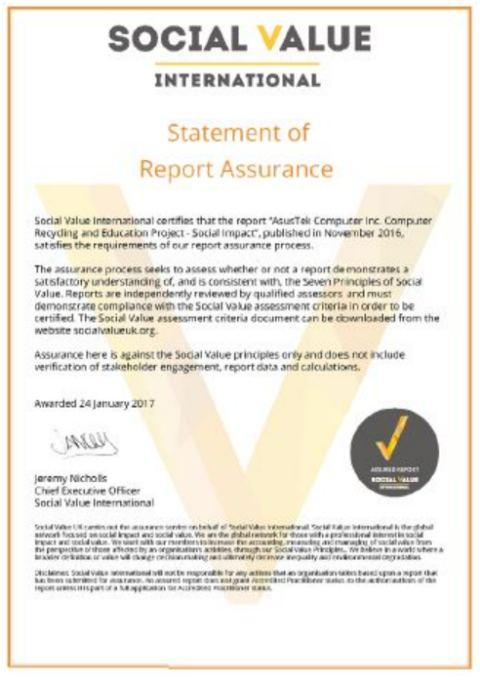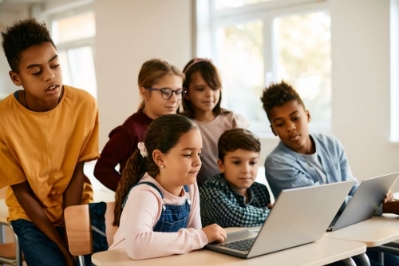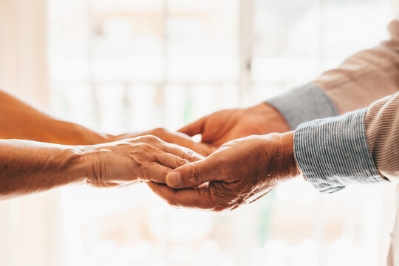Social Issues and Social Investment Strategy
Aligned with the vision of "striving to be among the world-class green high-tech leaders and to provide valuable contributions to humanity" ASUS has been actively engaged in social engagement since 2017. With "Digital Inclusion, Community Involvement, and Environmental Protection" as its three core pillars, ASUS combines domestic and international communities, links stakeholders with local communities, and collaborates to drive social impact. To continuously foster societal sustainable development, our objective for 2023 is to continue promoting long-term social initiatives such as the Refurbished Computer and Digital Training Program, Digital Happy Learning Camp, ASUS i-Taiwan Digital Volunteer Project, and to relaunch International Volunteer Programs. These initiatives will be planned by the ASUS Foundation, with a systematic approach to management and measurement of their impact. Regular progress reports will be submitted to the Board of Directors.
Over the years, ASUS has utilized the LBG (London Benchmarking Group) framework as the structure for assessing social impact. Since 2020, this organization has been renamed B4SI (Business for Societal Impact, B4SI), emphasizing the alignment of social impact measurement with business objectives. ASUS continues to adopt this globally recognized methodology for measuring impact and aligning its social investment strategy with an input-output model. We evaluate longterm project outcomes across three stages: input, output, and impact.
Our Inputs
Total Investment: NT$ 87,997,411
Driver for Contribution
Explanation:
- Charity Donation: year-end blessings donations, one-time emergency aid for Hualien earthquake relief, and arts and talent development programs, etc.
- Community Investment and Commercial Initiative: Projects centered around three main pillars, including international volunteer program and Digital Happy Learning Camp.
- In 2024, the primary type of input was charitable donations, accounting for 64% of total contributions. The proportions of community investments and commercial initiatives continued to grow, representing 30% and 6%, respectively.
Form of Contribution
Explanation:
In 2024, the primary form of contribution was cash sponsorship, accounting for 68% of total inputs. Due to initiatives focused on digital inclusion and community involvement—such as the donation of equipment to digital learning centers and ultrasound devices for medical and pandemic prevention efforts—the proportion of in-kind donations increased to 31%.
Our Outputs
Under the three main pillars, with details including:
Beneficiary Group, Measures, Community and Business Output
Our Impacts
Under the three main pillars, we shows our social impacts as follows:
Digital Inclusion
- Provided computer literacy courses and digital learning opportunities for vulnerable groups, aiming to enhance their digital skills and improve their quality of life.
- Encouraged youth participation in international affairs and strengthened their capacity for international volunteer service, fostering globally minded and socially responsible talent.
- The assessment results of the Refurbished Computer and Digital Training Program increased from 3.61:1 in 2016 to 4.45:1.
Community Involvement
- Enhanced the work capabilities of individuals with intellectual disabilities and improving the quality of life for their families.
- Empowered vulnerable children to enhance their self-confidence and creativity.
- Educated children on environmental knowledge to enhance awareness of climate change.
Environmental Protection
- Encouraged employees to participate in environmental actions to raise environmental awareness and drive positive change for both people and the planet.
Social Return on Investment (SROI)
In the past, enterprises participated in public welfare activity and focused merely on the investment of resources. They omitted the effects or impacts that the charity might bring to the caring ones. Was the expected effect achieved? This ignorance prevented enterprises from evaluating the actual effects and outcomes of an activity, thus they were unable to quantify the information and help optimize the effects and outcomes of their actions.
In order to solve the problem of focusing on very qualitative and subjective regarding sustainable information, in 2016-2017, we took the lead in adopting the Social Return On Investment methodology to evaluate our strategic community investment - Refurbished Computer and Digital Training Program. The concept of SROI is similar to the concept and practice of investment in current financial accounting. Through the unified measurement method and the reporting principles, non-profit activities can also generate information on performance measurement with decision-making and management values.

Each dollar invested generated a social value of NT$ 4.45
ASUS has been investing in the "Refurbished Computer and Digital Training Program" since 2008. The recycle information communications products are refurbished and are donated to the non-profit organizations, and thus establishing a "Sound Material-cycle Society". In order to measure the performance of the program, according to the calculation process and principle in the SROI guide (2009) revised in 2012 by Office of the Third Sector, Cabinet Office, UK, ASUS used a 6-step model to determine the Theory of Change in input, output and result, where currency was used as the measuring unit. The final analysis of the social return on investment of the program showed that each dollar invested generated a social value of NT$ 3.61. On the basis of the same calculation, the assessment result has been increased from 3.61:1 in 2016 to 4.45:1 in 2024.
In 2017, the "ASUS Social Return on Investment Report of Refurbished Computer and Digital Training Program" was certified by Social Value International, making it the first Asian technology-based corporation and the first in Taiwan to receive such international certification.





